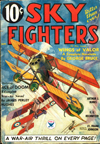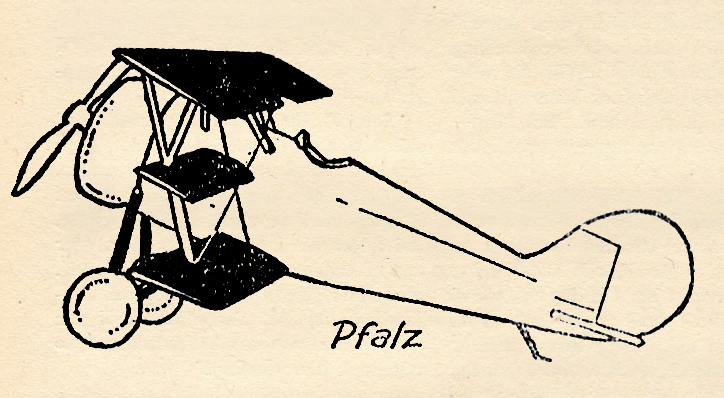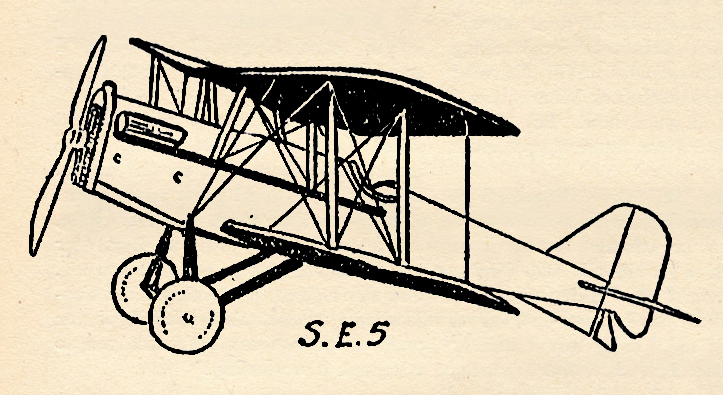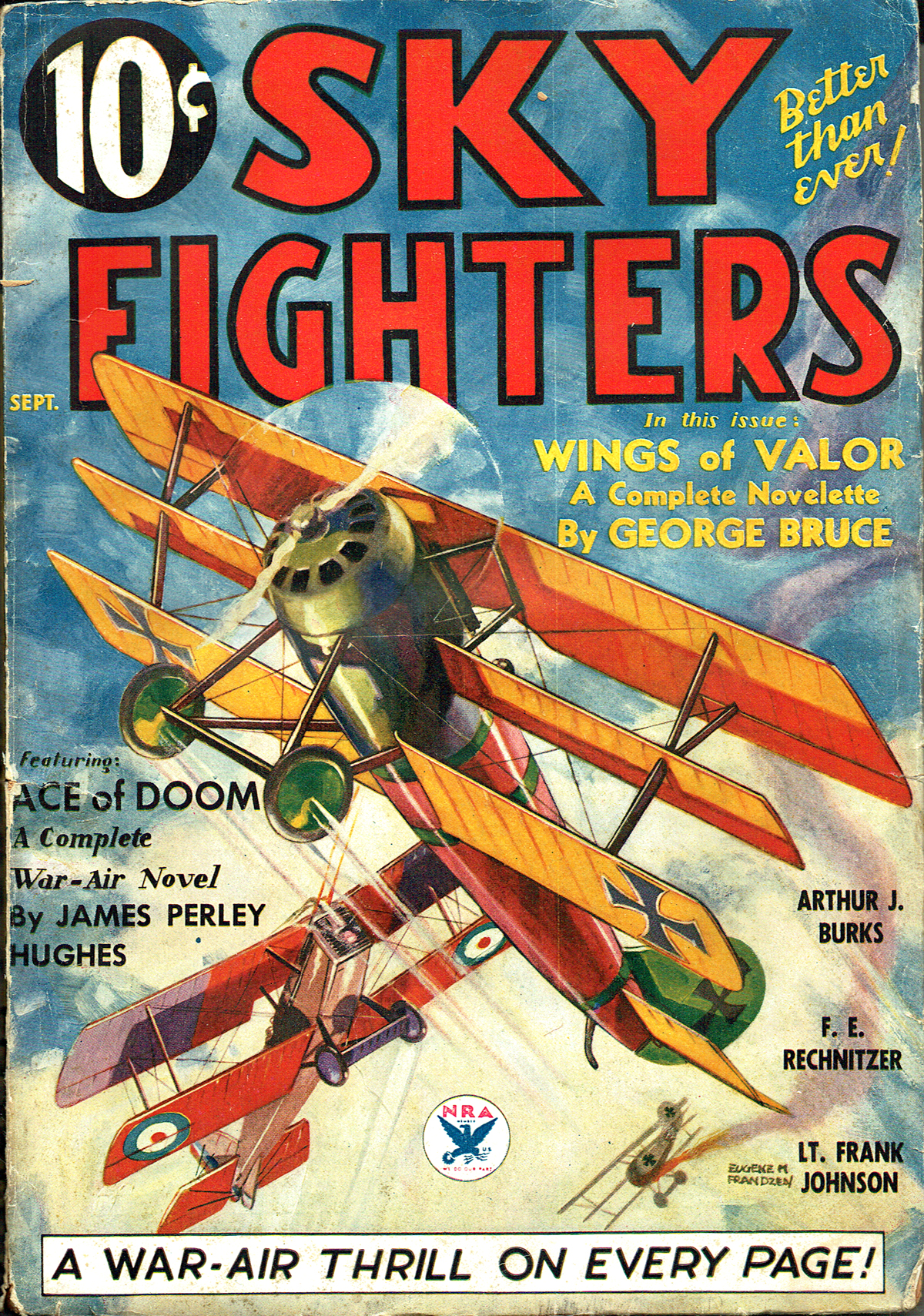“Sky Fighters, September 1934″ by Eugene M. Frandzen
Eugene M. Frandzen painted the covers of Sky Fighters from its first issue in 1932 until he moved on from the pulps in 1939. At this point in the run, the covers were about the planes featured on the cover more than the story depicted. On the September 1934 cover, It’s the Pfalz Triplane vs the indomitable S.E.5!
The Ships on the Cover
THE Pfalz Triplane was  one of the neatest looking jobs among the number of multi-wing planes which all European countries experimented with during the late fracas Over There. The fuselage was exceptionally slick in proportion and line. If you can imagine the two top wings removed and the bottom wing having a much greater chord you will see a strong resemblance between this tripe of bygone war days and the Lockheed Sirius of modern times.
one of the neatest looking jobs among the number of multi-wing planes which all European countries experimented with during the late fracas Over There. The fuselage was exceptionally slick in proportion and line. If you can imagine the two top wings removed and the bottom wing having a much greater chord you will see a strong resemblance between this tripe of bygone war days and the Lockheed Sirius of modern times.
Those designers of a sixth of a century ago did some sweet visualizing far in advance of their time. If they’d have had engines as efficient as those of today to yank their stick and wire jobs through the clouds there’s no telling what the outcome of the air campaigns might have been.

Three Winged Crates
But we’re not as interested in the fuselage as in those three wings which make our Pfalz a Triplane or Dreideckcr. In building this type of ship the hope was for greater efficiency in all ways. They got it in some and lost it in others. In using three instead of one or two wings the chord and span could be reduced. Then the tail assembly could be pushed up closer to the wings, giving compactness and maneuverability. A single interplane strut could be used on each side, instead of the conventional double struts. The Pfalz used a combination of V strut and straight single strut. The top wing did most of the lifting work as the lower wings had a very narrow chord.
The Nieuport, Sopwith, Albatross and Fokker firms experimented with the triplane idea. Fokker undoubtedly was influenced by the Sopwith “tripe.” Some other manufacturers even went in for quadraplanes, and not to be outdone, one stuck on five planes which made the crate look like a flying stepladder.
On the cover the Pfalz tripe in the foreground with the red belly has been tearing in and out of the ring-sights of the S.E.5. That fight started down low and gained altitude as the two ships circled and sparred with left and right guns.
Even Steven
The famous S.E.5 of British origin, one of their outstanding successes, has the edge on the tripe in many of their in and out maneuvers, but a triplane has a much reduced period of inertia in the horizontal plane; so therefore is able to slip from one dodging tactic to another quicker than the S.E.5. So it was about “even Steven” in this climbing fight.

Suddenly another Pfalz tripe hove into the scrap with spitting Spandaus. Just about the time it looked like curtains for the S.E.5 her pilot flopped his ship into a trick skidding turn and sprayed a drizzle of slugs into the second ship. Down it went smoking, out of control. Not contented with his one victory he repeated his maneuver on the surprised Boche in the foreground Pfalz. One quick burst from the Vickers sent bullets thudding into the German pilot. He died instantly with his nerveless hands and feet still holding his plane in a climbing circle.
The S.E.5 pilot followed for a moment then eased his plane aside and headed for home. Once he turned, raised his right hand in salute as he watched the triplane, now a tiny speck far above, still gracefully climbing into the blue dome of heaven.

Sky Fighters, September 1934 by Eugene M. Frandzen
(The Ships on The Cover Page)
Next time, Mr. Frandzen features the Halberstadt C.L.2 and the Avro Spider!




